Renovating your kitchen? After choosing your cabinets, tiles, and kitchen countertop, the next item is usually the kitchen hood (and cooker hob).
Also known as a range hood or vent hood or a cooker hood, the kitchen hood is one of the most important appliances in any kitchen. Even if you cook only once a week (or even less), you should install a kitchen hood, because it just takes one big stir fry to fill the kitchen with smoke.
But, with so many models available, each with multiple features and technical specifications, it can be hard to know which type of kitchen hood is right for you. Every major kitchen hood brand carries around 10 to 15 models, so you need to know how to narrow the selections down before deciding to buy.
Here is a basic guide to buying a kitchen hood in Malaysia.
Plus, you can even buy your kitchen hood and hob online to save money. Visit the Fotile Flagship Store on Shopee | Fotile Flagship Store on Lazada
Table of Contents
What is a kitchen hood?
At its basic level, a kitchen hood is made of a canopy, a suction fan, and filters.
When you are cooking, all the smoke, steam, grease and smells will float upwards into the canopy.
The suction fan will then pull in the polluted air from the canopy tray, where it can be filtered. This helps to keep your kitchen smelling fresh, and prevent the odours from reaching the rest of your house, or getting into your hair and clothes. After all, nobody wants their bedroom mattress to smell of sambal.
The cleaner is then blown out of your house through an exhaust pipe. Or, it can be recirculated back into the kitchen.
Most kitchen hood models also have lights, so you can see what you are cooking more clearly.
Types of cooker hoods
There are three main types of cooker hoods:
Chimney / Wall-mounted cooker hood
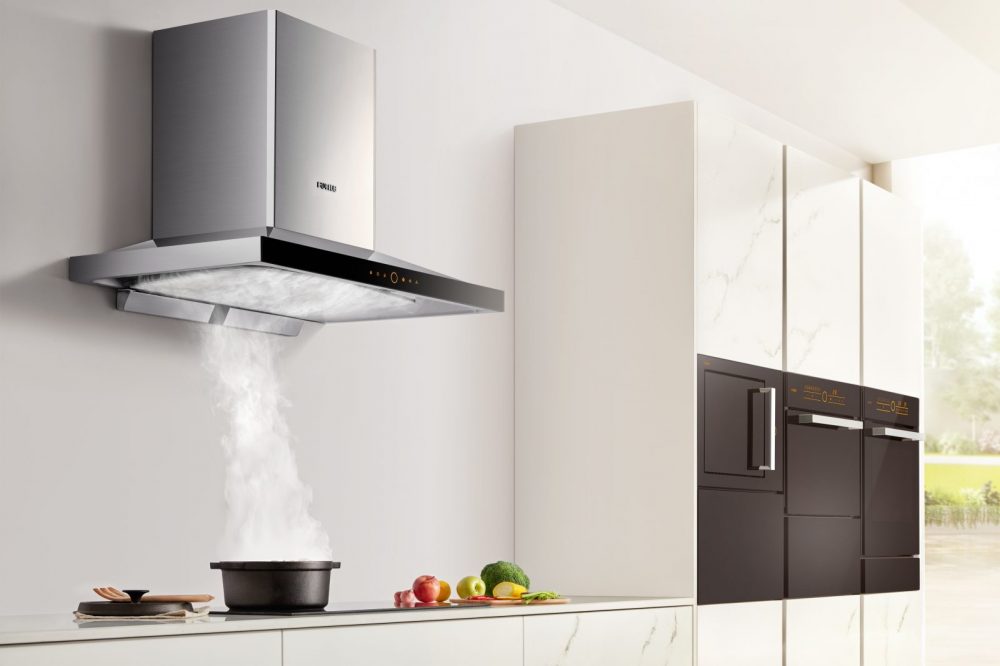
This is one of the most common types of kitchen hood. The unit is attached to a bare wall, but you can add cabinets on each side. When in use, the suction fan pulls the cooking smoke through the filters and then gets blown up to the top of the chimney that leads to an exhaust pipe.
The exhaust pipe can be directed to a hole in your kitchen wall that leads to the outside, so all the smoke can be blown out of the kitchen. This is called a ducted, or ventilated kitchen hood.
If you are not able to cut a hole in your wall for the exhaust pipe, you can also get a chimney hood that filters the air and recirculates it back into the kitchen. This is called a ductless, or recirculation hood.
Wall-mounted hoods also come in slanted versions, which are gaining popularity. These give your kitchen a unique look, and does not block your head when cooking.
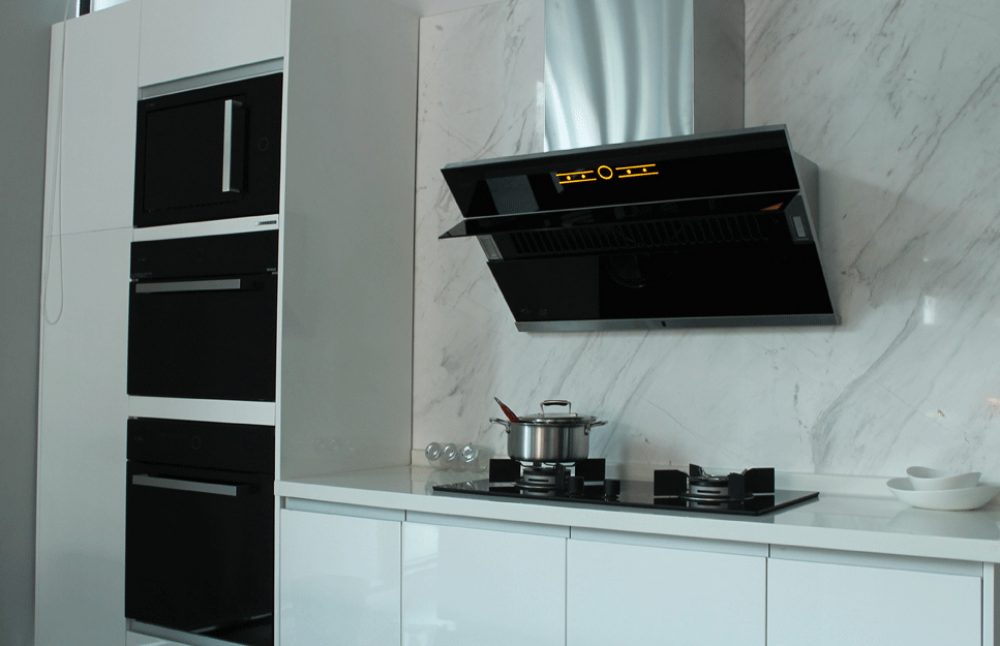
Slim / Telescoping cooker hood
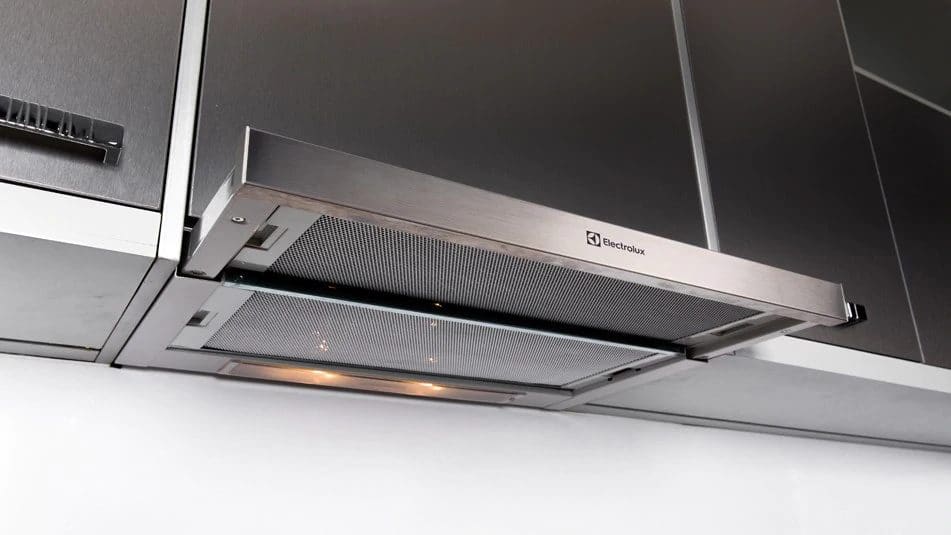
Another type of kitchen hood is the slim kitchen hood. This type of hood does not have a tall chimney section, so it can be installed underneath an existing cabinet.
Similar to the wall-mounted hoods, slim kitchen hoods can be ventilated or recirculating. In a ventilated slim hood, the top of the hood can be attached to an exhaust pipe concealed within the cabinets, and lead to the outside.
There is also a version of slim hood called the telescoping hood. This type of hood hides completely within your cabinets, and drops down into view when switched on.
Island kitchen hood
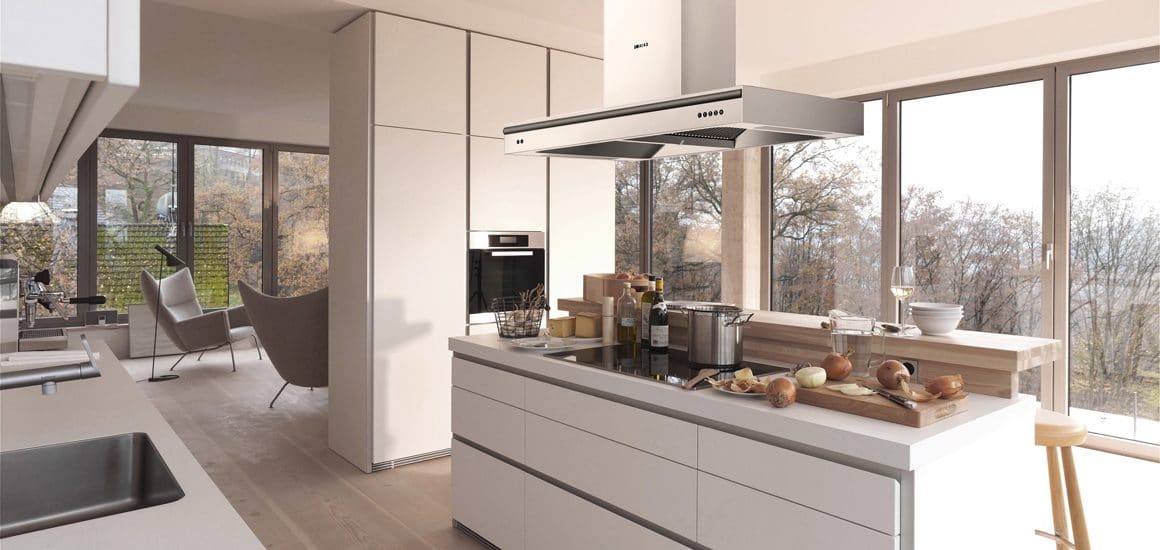
If you have an island kitchen, you will need to install an island hood. The main difference between this and a wall-mounted hood is that island hoods need to have more suction power, since the cooking area is more open. Without strong suction, the smoke may blow away before it reaches the hood.
Island hoods can also be ventilated or recirculating. However, if you want it to be ventilated, you may need a plaster ceiling to conceal the exhaust piping.
What kitchen hood features do I need?
Once you have determined the type of cooker hood you need for your kitchen, you need to choose the right specifications, such as:
- Width: how wide is your cooking area?
- Height: how high should you mount it?
- Suction power: the fan needs to be powerful to pull in all the pollutants
- Recirculating or ventilated: are you able to pipe the smoke outside?
- Type of filtration: what method is used to trap grease and oil?
- Noise: is it noisy when switched on at full power?
- Maintenance: how often does it need to be cleaned?
- Design: does it match your overall kitchen design?
As you can see, there are many things to consider, so let’s tackle them one by one.
Cooker hood width
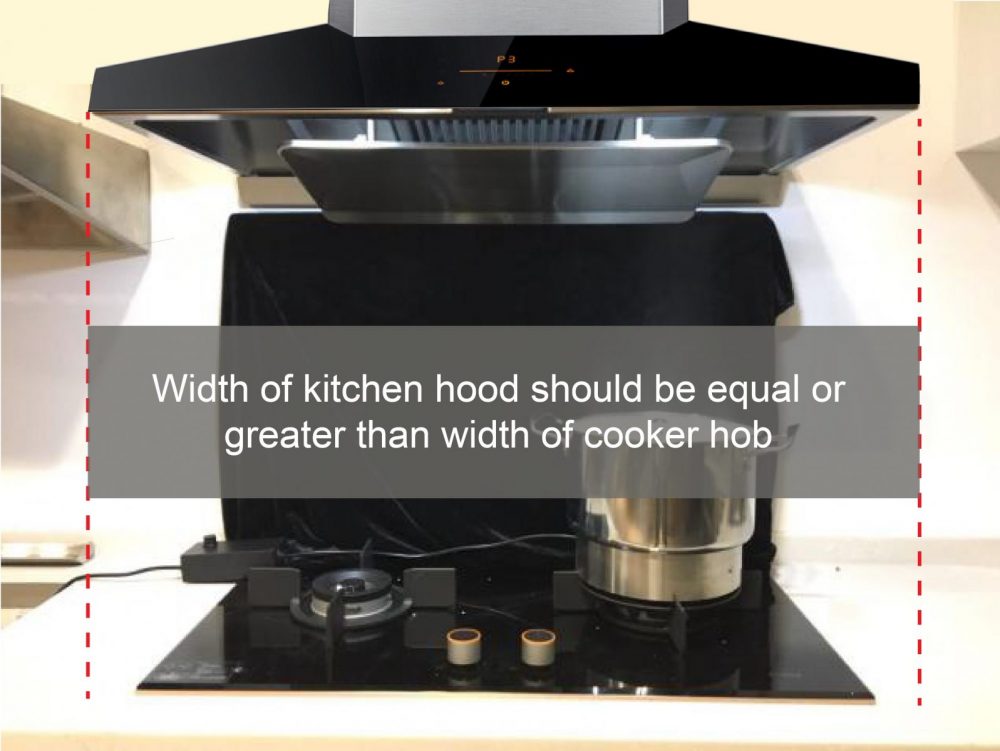
Ideally, you want a kitchen hood canopy that is bigger than your cooker hob. At the very least, get one that is the same width as your cooker hob.
Most gas and induction cooking hobs are between 60 to 90cm width. And, most wall-mounted hoods come in 90cm width to match.
For island hoods, they come in widths of 90 to 120cm to provide better coverage, since the island cooker hob will be subjected to more cross breezes that may blow the smoke away.
How high should the cooker hood be installed?
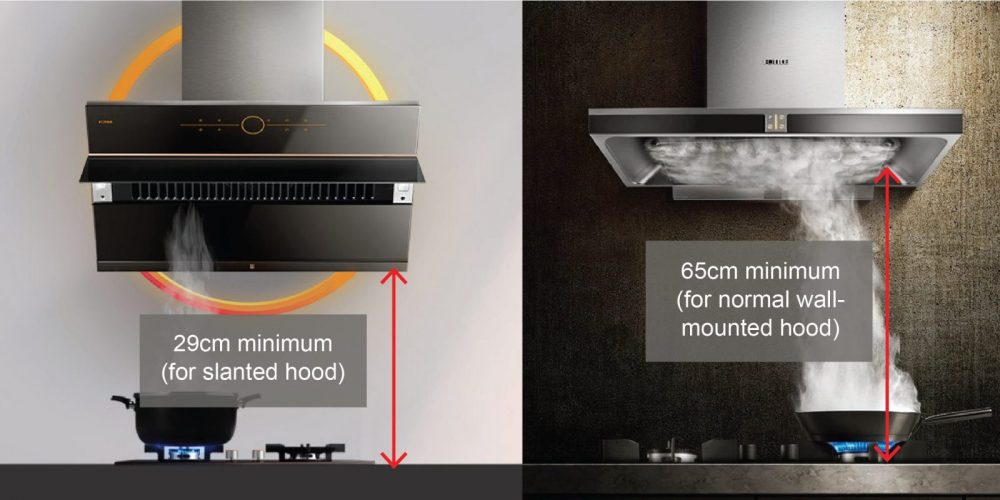
The height of the cooker hood should be low enough so that it is able to trap cooking smoke, but not too low that it blocks your view.
FOTILE researchers have discovered after numerous experiments that the Optimal Cooking Smoke Control Zone is exactly 580mm above the table top.
The recommended height from the table top to the bottom of the hood should be around 29cm to 34cm for a slanted hood and 65cm – 75cm for a normal wall-mounted hood.
If you are a tall person and you have a recirculating hood, you may want to mount the kitchen hood a little higher so that the filtered air does not blow back in your face and hair. However, mounting it too high may reduce its effectiveness. As a general rule, don’t position your kitchen hood more than 75cm above the cooker hob.
Another consideration is the height of your ceiling. If you have a very high ceiling, your kitchen hood chimney will not be able to reach it, even if you add the extra outer ducting provided.
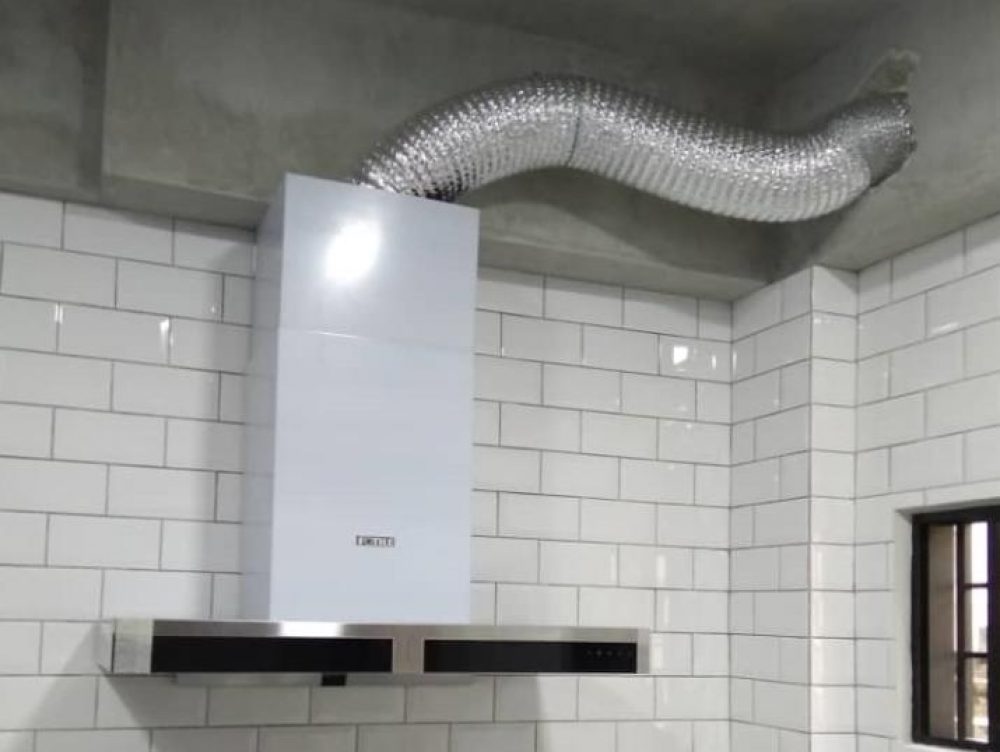
This does not affect the functionality, of course, but some homeowners prefer a chimney to look like it is reaching up into the ceiling, instead of stopping halfway up the wall. One way to avoid this “hanging” look is to add a cabinet above the chimney.
How powerful should a kitchen hood be?
The suction power of a kitchen hood is measured by how much air it can move in a given time. It is usually expressed as cubic meters per hour (m3/hr). The higher the airflow, the more powerful the fan motor inside the kitchen hood, and the more electricity it will consume when switched on.
If you do more heavy cooking, such as stir fry with a wok, or deep-frying, you may need a kitchen hood with higher airflow.
Wall-mounted kitchen hoods have a maximum airflow of around 1850 to 1200 m3/hr when set at full speed, consuming about 200 to 300 watts.
Island hoods run at a maximum of 1450 m3/hr, and slim hoods have a maximum airflow of around 500m3/hr.
Recommendation: You don’t always need to go for the highest suction power possible. Different brands may have other features that improve the hood’s ability to draw in the smoky air. For example, FOTILE kitchen hoods have moving trays that automatically adjust to the volume of smoke being produced. It’s best to test before buying.
Recirculating hood or ventilated hood?
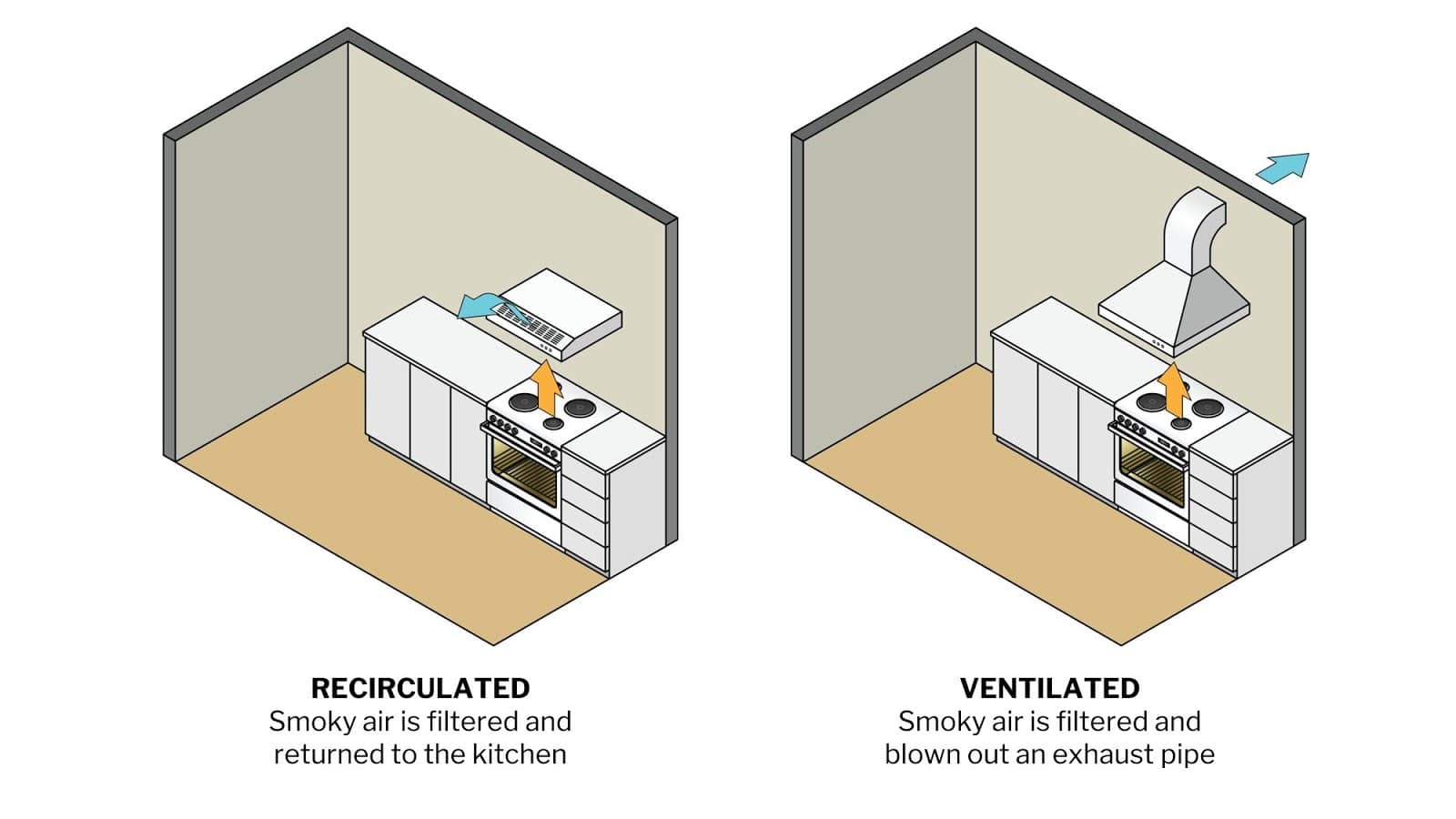
The most effective way to remove smoky air from your kitchen is to blow it outside. This requires a ventilated kitchen hood that has an exhaust pipe leading to the outside.
To achieve this, your contractor will need to cut a hole in your kitchen wall. The size of the hole is normally around 17cm diameter. But this varies depending on the brand.
But if you live in a condominium or apartment, it’s usually not allowed to cut holes in your walls. Instead, you will need a recirculating hood.
Most kitchen hoods will run as a recirculating hood, but also have an attachment to connect an exhaust pipe to change it to a ventilated hood.
Recommendation: If you live in a landed property, get a ventilated hood. If you live in a property where you can’t cut an exhaust hole, get a recirculating hood, and focus more attention on good filtration such as one that has a high-filtration rate. Source: FOTILE
Types of cooker hood filters
As the air is sucked into the kitchen hood, it will be filtered to remove grease, smoke and steam. This happens even if the air is ventilated outside.
There are three types of filters used in kitchen hoods:
Mesh filter
This is made from several layers of fine aluminium mesh. As the smoky air is pulled through the filter, the grease sticks to the filters, and cleaner air comes out the other side. They will need to be washed regularly otherwise the pores will get clogged up. If it gets clogged up, your hood will need to work harder, and the noise will increase.
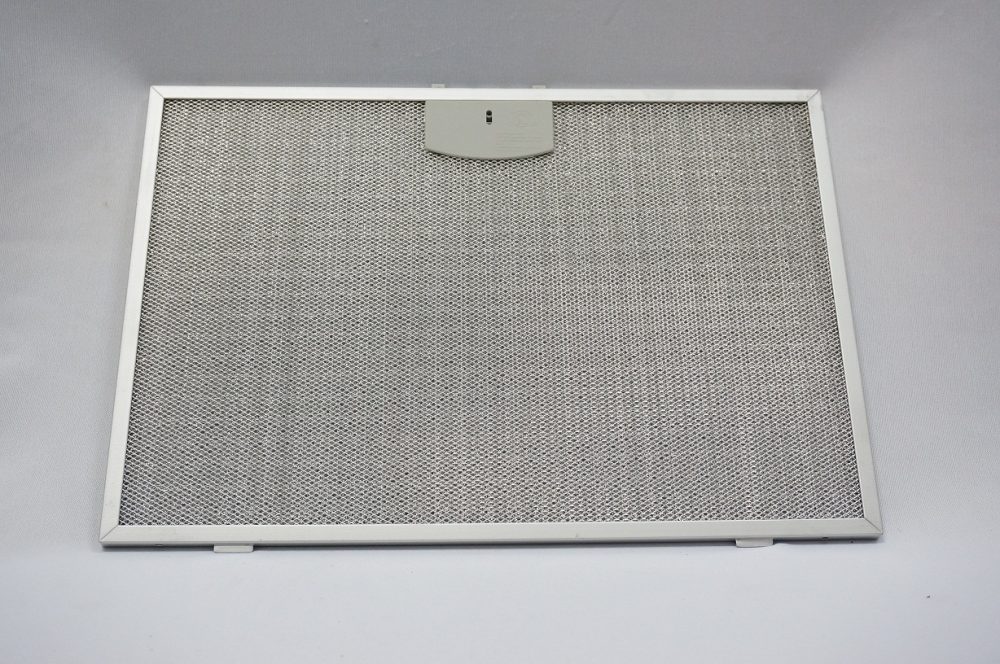
Baffle filter
This is made from multiple plates of stainless steel or aluminium. Grease will condense on the blades or fins of the baffle filter, and drip into a collection cup or gutter. The cup can then be emptied out. Baffle filters also need to be washed regularly to prevent build up of grease. However, since they do not have small pores, they are less prone to clog up, so will not reduce the airflow.
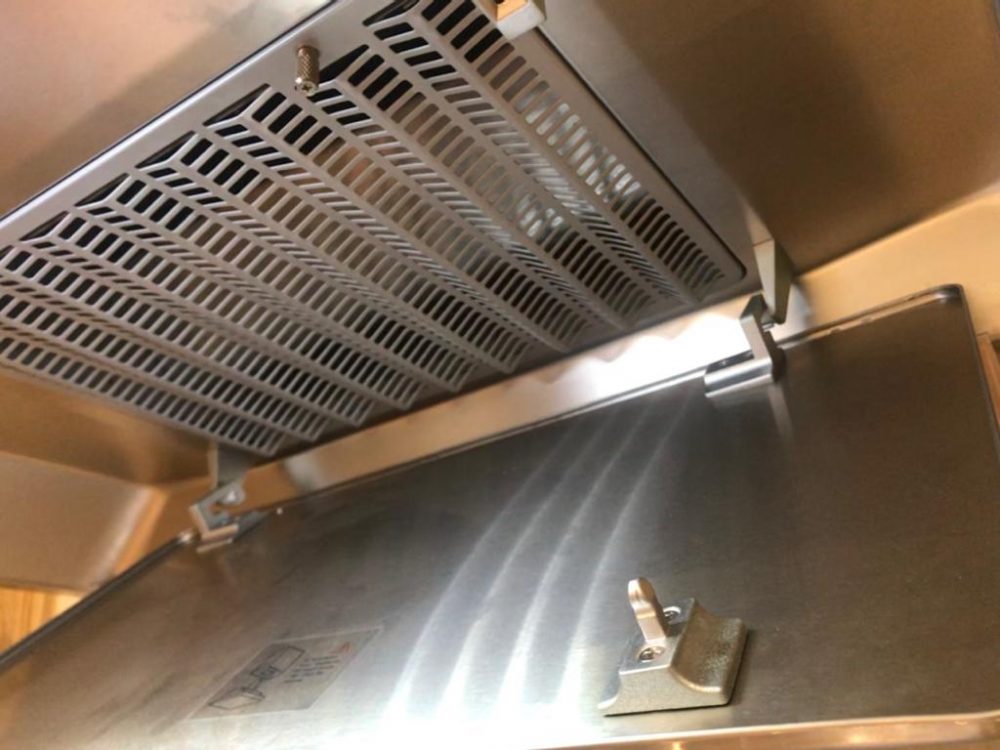
Charcoal filter
Charcoal filters are usually found in water purifiers and gas masks, but they are also common in kitchen hoods to absorb odours. They cannot be washed, but need to be replaced every few months.
All kitchen hoods will use either mesh or baffle filters. However, only recirculating hoods need the additional charcoal filter to clean the air that is blown back into the kitchen.
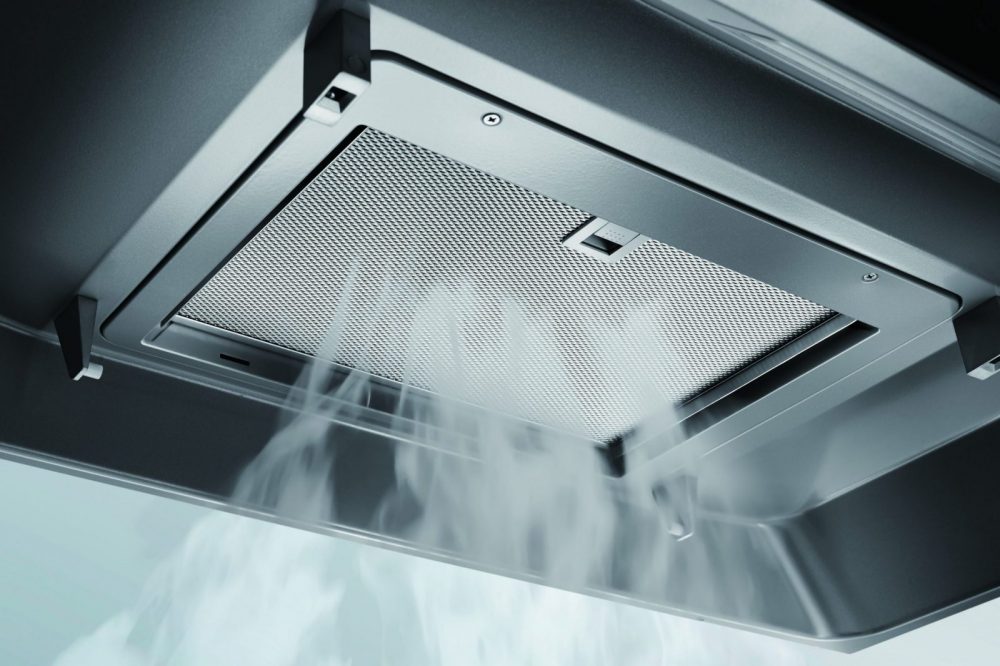
Recommendation: There is no clear winner here. Baffle filters may be easier to clean, but need to be cleaned more regularly otherwise they will start to drip grease. Always remember to look for range hoods that are easy to maintain and dismantle-friendly.
Noise
When a kitchen hood is running at full power, the noise of the fan can be very high. Modern kitchen hoods use advanced aerodynamics to reduce the noise, and some models are advertised as “silent” hoods.
A kitchen hood at full power will have a noise level of around 52dB. Just for comparison, that’s the same as a hairdryer, while a vacuum cleaner runs at about 70dB. Some kitchen hoods advertised as “silent” run at around 44dB (equivalent to the background noise of a library).
However, the noise levels can potentially increase if the mesh filters are not cleaned regularly, since the fan has to work harder to maintain the airflow.
Recommendation: If you have an open kitchen, look for a quieter kitchen hood. The noise from the suction fan may disturb people in the dining and living area.
Maintenance
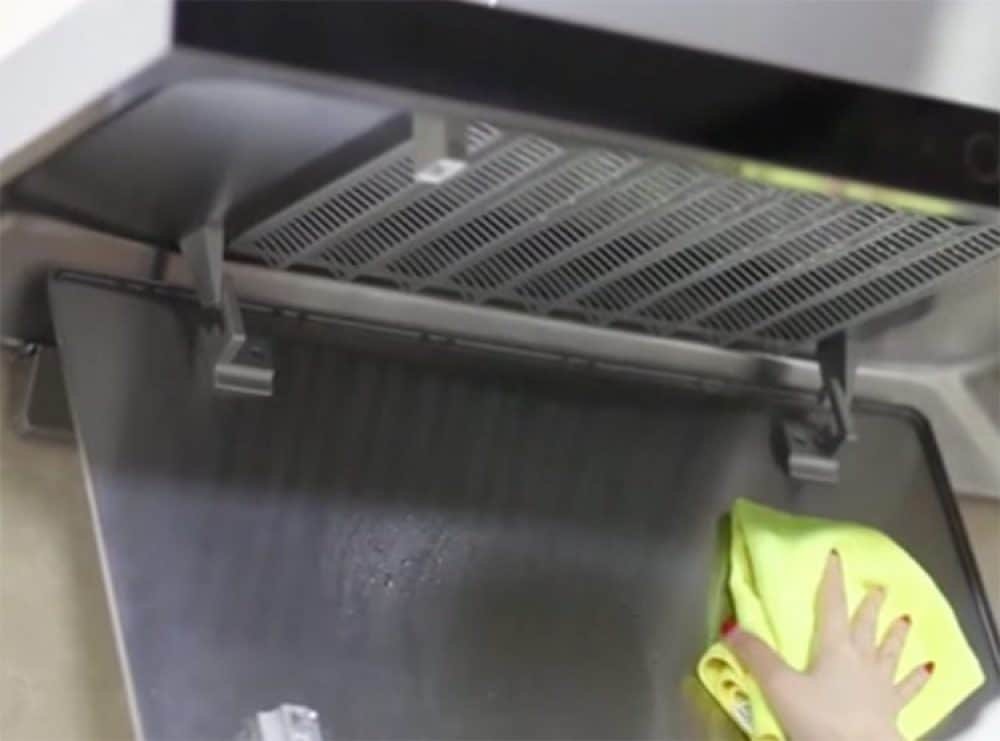
How often will you need to clean your kitchen hood? Ideally, you should wipe the hood after every cooking session. This includes the canopy tray and the chimney.
Then, for hoods with baffle filters, you will need to grease cup and empty it out, then give them a wipe before reattaching.
Next, you should wash the filters every 2 to 4 weeks. Remove them and soak them in hot water with some cleaning solution for 10 minutes. Then, brush the filters to remove the grease (don’t use steel wool or other abrasive brushes). Finally, dry them and reattach them to the hood.
Many homeowners comment that baffle filters are easier to clean and they look as good as new after. However, mesh filters may continue to get more and more clogged unless you give them a deep cleaning.
The manufacturers also recommend cleaning the blower fan once a year. Depending on the model of the kitchen hood, this may require some disassembly.
Recommendation: Choose a brand that has good after-sales support. If you need spare filters, or if the touch screen stops working, it’s good to know it can be serviced easily.
Cooker Hood Design
The last consideration before choosing a kitchen hood is; will it look good in your kitchen?
The vast majority of modern kitchen hoods are made from stainless steel and tempered glass. Therefore, the two main “looks” of kitchen hoods are either silver or black, so it’s up to you (and your interior designer) to choose one that suits your style.
Some homeowners will create a custom-made enclosure for the kitchen hood. For example, they might conceal the chimney section in to match their cabinetry, or even build their own chimney in copper or bronze for a metallic look.
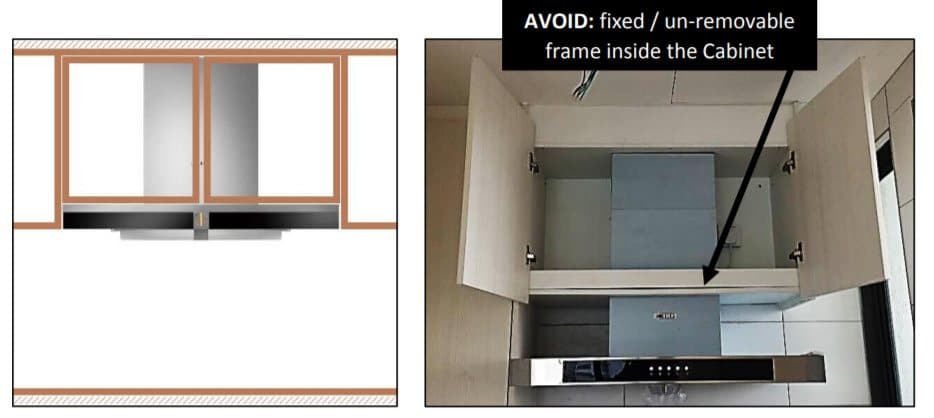
Price of kitchen hoods and installation
Prices of kitchen hoods will depend on all the factors mentioned earlier; width, type of filter, etc. It also depends on whether the hood has add-on features such as touch screen, multiple speeds, lights, self-cleaning, and more.
The installation price of kitchen hoods starts from around RM300. If you need to cut a hole in your wall and install the ventilation exhaust pipe, it can increase up to RM500.
For ventilated hoods, note that only 10ft of exhaust ducting is included. If you need to pipe the smoke through more than 10ft of piping, the installation will cost more. There is also the worry that the suction power may not be enough if the piping is too long. In such cases, you may consider kitchen hoods with an auto-turbo function to increase efficiency.
Conclusion: Know your preferences when buying a kitchen hood
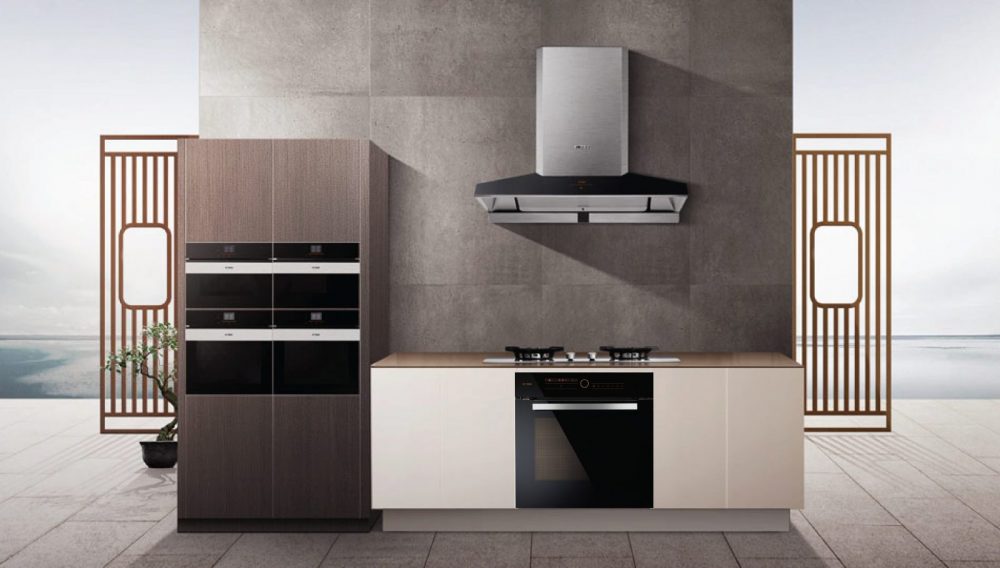
In the old days, if you wanted to do heavy cooking, you would set up a portable stove in your yard, and cook facing the outdoors. Kitchen hoods were never a consideration.
But now, a kitchen hood is not just an essential appliance, it also makes a design statement to your kitchen. A shiny kitchen hood makes any kitchen look more modern and futuristic, and plays an important part in keeping the house clean and fresh.
When buying a kitchen hood, you need to figure out what feature is most important to you. Do you need it to be quiet? Or to have very strong suction power? Or to look good? All these factors will impact the cost. And, as with any kitchen appliance, as long as you maintain it regularly, it will provide you with many years of use.
Plus, you can even buy your kitchen hood and hob online to save money. Visit the Fotile Flagship Store on Shopee | Fotile Flagship Store on Lazada


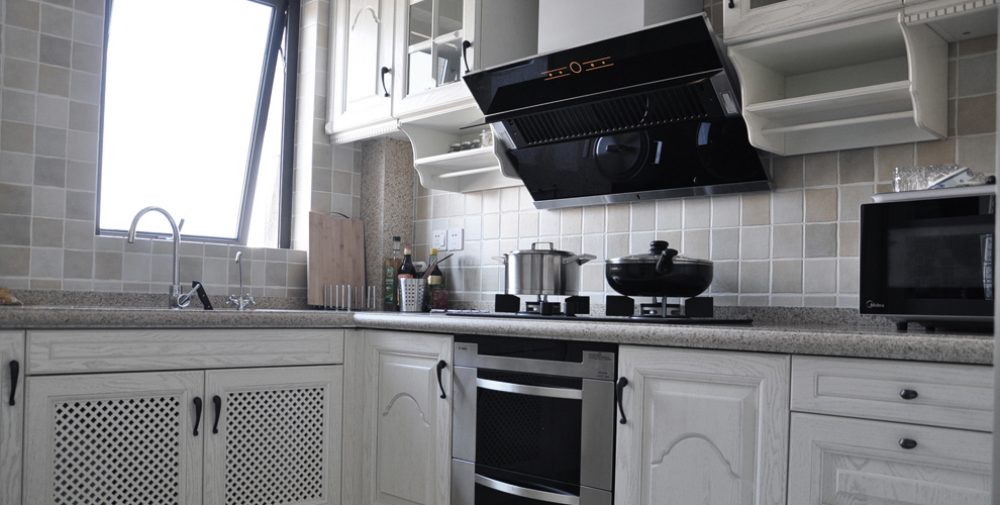
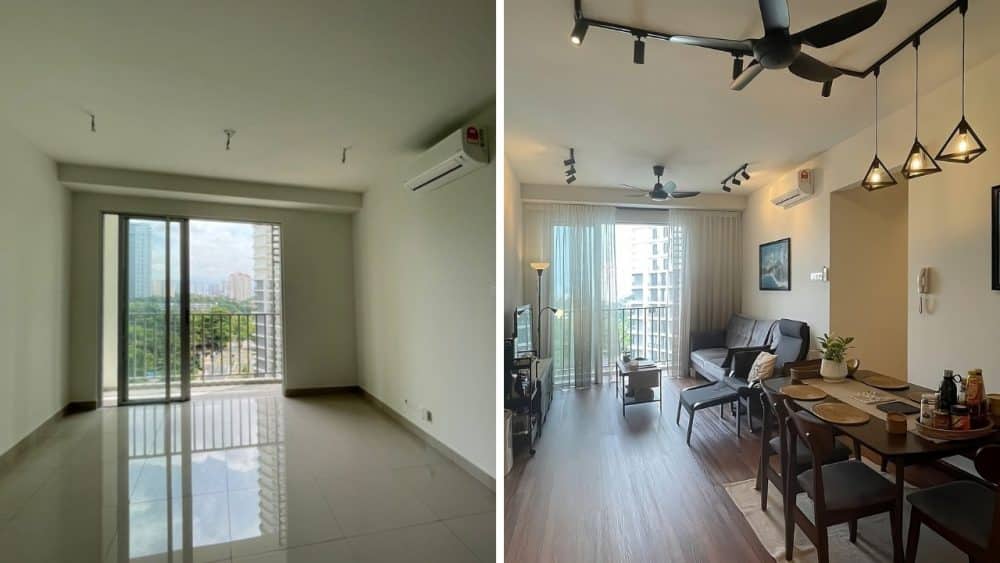
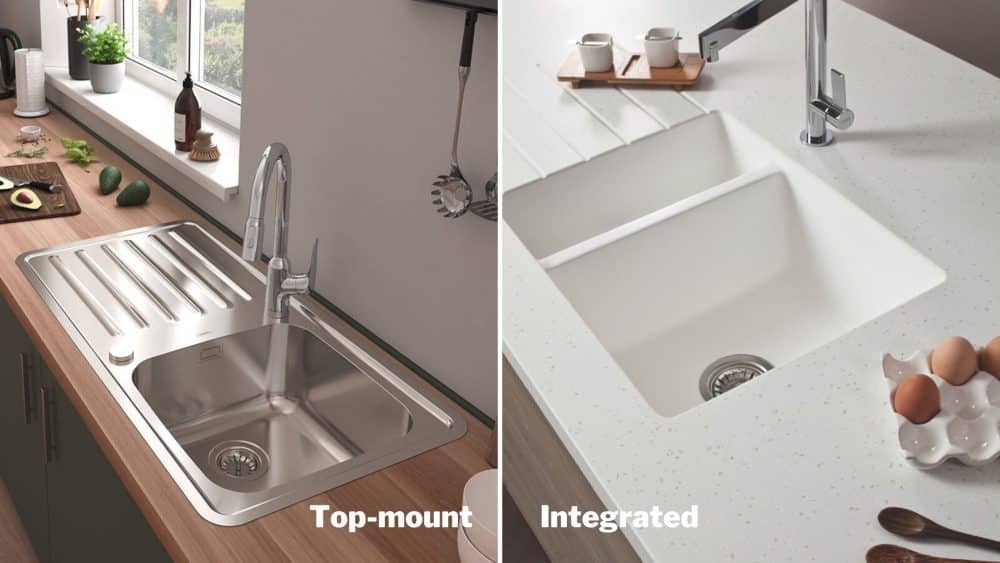
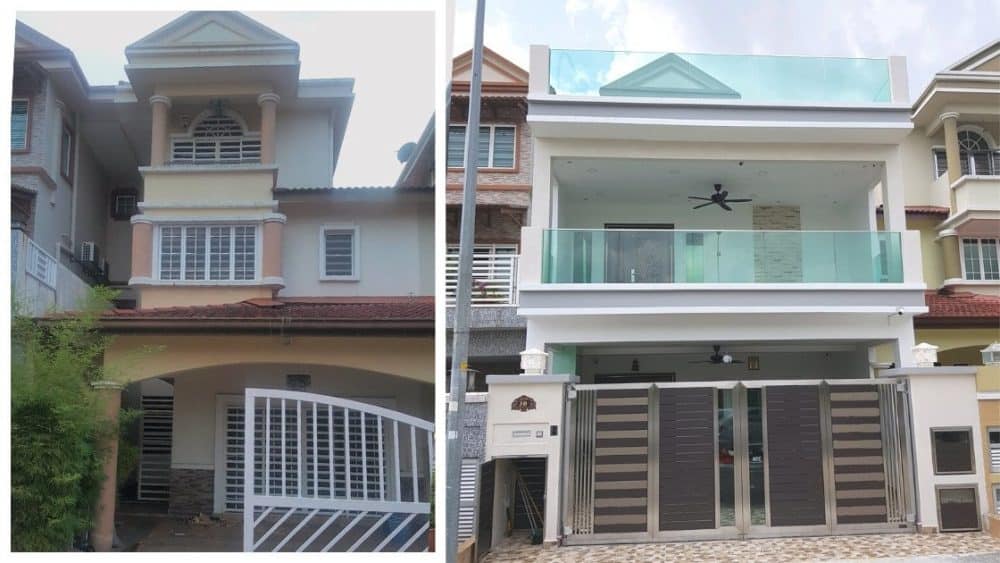
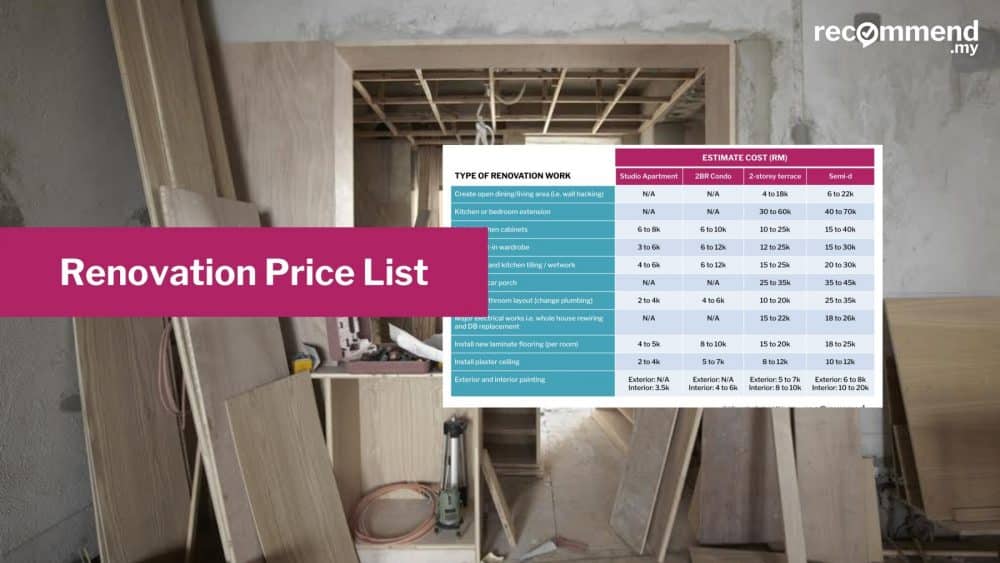
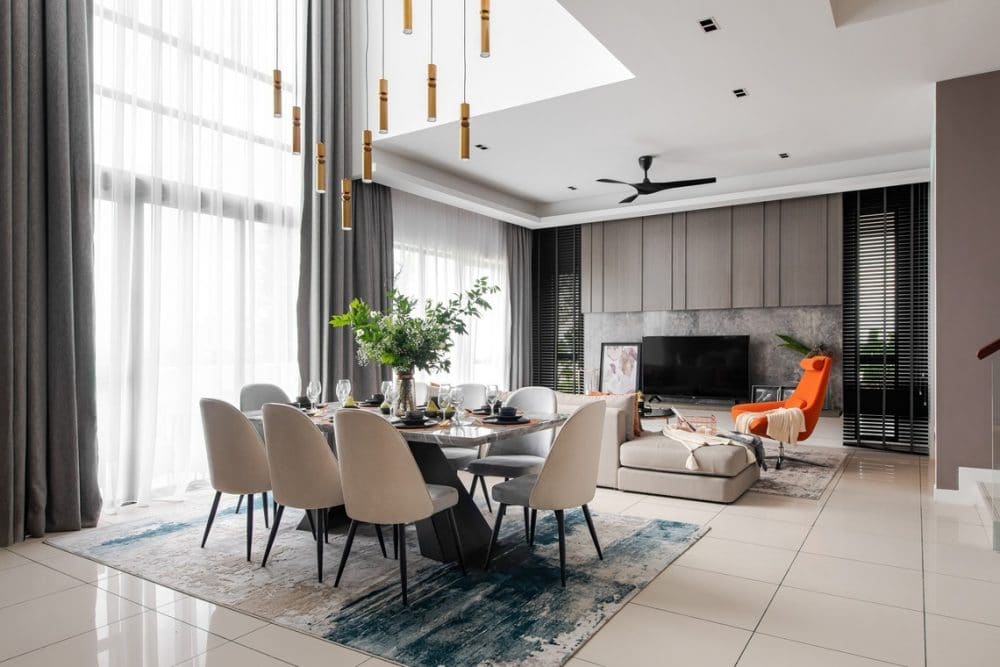
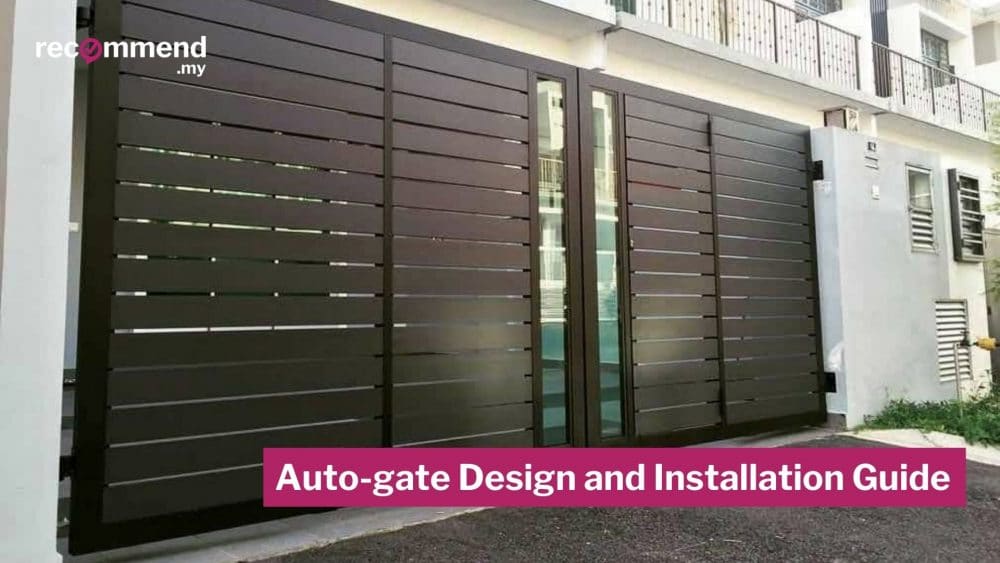
Ahh, superb guide especially for a newbie like me.
Thank you. This guide is a great help. I now know details to look into before buying.
Hi, Can you explain why we need to avoid fixed/un-removable frame inside the hood cabinet
Because fixed/un-removable frame will cause you unable to remove the tall chimney section cover of the chimney hood. When it comes to maintenance such as replace the electric circuit board(hidden inside tall chimney section), it will be very difficult for you to remove the tall chimney section cover.
The article is very helpful, I will decide to install a hood
The article is very insightful, thanks:)
Pingback: Clean Kitchen Oil Stain Mark - User Feedback Oil Clean ResultSpecilize in Industry Cleaning Process
Thanks for sharing!
Check out ours as well
https://www.kaneka.com.my/
Thanks for sharing!
Check out ours as well
https://www.awesomeppe.com.my
“Thanks for sharing!
Check out ours as well
https://tripleaccess.com.my/“